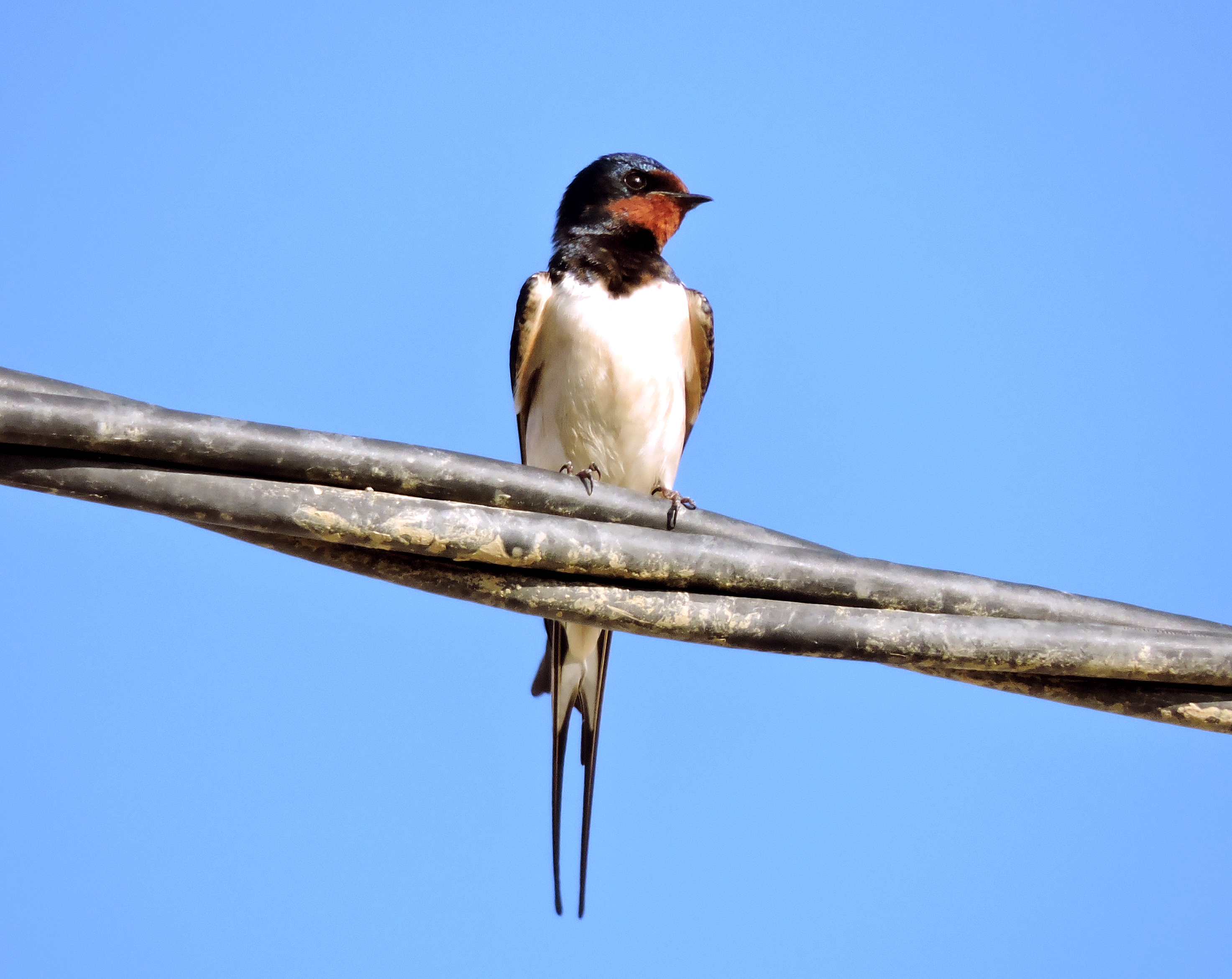Swallows’ Nests: The Ideal Insecticide

By Jose Luis Gallego, environmental communicator (@ecogallego)
On spring evenings, the aerial acrobatics of swallows and swifts swooping low through the fields, their wingtips grazing ears of wheat or grapevines, treat us to one of the most harmonious displays of nature. Besides their evocative beauty, the serene image of these birds in flight is seen as an auspicious sign by rural people, as a promise of fair weather.
Swallows, swifts, and house martins are an asset for both fields and villages where their nests are warmly welcomed at country houses, farms, stables, and wineries.
In rural areas, people have long known that welcoming these birds means flying insects – especially mosquitos – will disappear in droves. As a result, they respect the birds deeply and allow them to nest in the vicinity of their houses, even on porches or in interior courtyards – an example of perfect human and avian neighbours.

A barn swallow perched on a cable (photo: Jose Luis Gallego)
A single barn swallow (Hirundo rustica) can consume around 850 mosquitos per day. If we are lucky enough to have a swallows’ nest near our home, the pair would single-handedly eliminate up to 1700. If on top of that we add the insects that the parents feed the chicks in their nest, this number could be two to three times higher, depending on the size of the clutch. No insecticide in the world is this efficient or this environmentally friendly.
However, in our cities, where the common house martin (Delichon urbicum) is the most populous of the three, these birds do not enjoy the same degree of acknowledgment and respect. Quite the opposite. Every year around this time, which coincides with the birds’ breeding season, their nests are forcibly removed from buildings. In most cases, this is done by residents who are frustrated with bird droppings accumulating below the eaves or on balcony ledges. Both are spots where house martins like to build their nests.
The same is true of swifts, who place their nests in the nooks and crannies of buildings. These birds spend 90% of their time in the air. They eat, sleep, and even mate in flight. They only land to build their nest or raise their chicks. In fact, they have extremely short legs, so much so that their scientific name derives from the Latin a, “without”, and pous, “foot”, or “footless”: Apus apus. Given their long absences, it is common for their nests to be sealed during renovation work on building façades. If this occurs during the breeding season (between May and August), the outcome is especially dramatic, because the poor chicks end up trapped inside the walls while the adult birds will try again and again to get inside.
In Spain, all species of swallows, house martins, and swifts enjoy legal protection. They are included in LESPRE, the Spanish list of wild species granted special protection status, and the Spanish Catalogue of Threatened Species. It is therefore illegal to harass or cause them harm, much less destroy or block their nests, even when they are empty. Doing so is considered a serious offence – a crime in our penal code – and, as such, can carry a prison sentence. If reported, the fines for such offences can be as high as 200,000 euros.
In any case, if we want to avoid the inconvenience of excrement accumulating below the nests, all we have to do is attach two supports on the wall and place a tray on top, which we can then empty as needed. By the way, these droppings make for an excellent fertilizer, ideally suited to the needs of our terrace or balcony plants.
If we must renovate the roof or façade of a building where swallows or swifts have nested – and once we have obtained the required licence from the municipal authorities – we should wait until the birds have left the nests at the end of the summer. Once empty, we should consider all possible options to restore rather than destroy them, thereby allowing the same birds to return and occupy them again. Records show that some swallows’ nests are more than 50 years old and have been used by dozens of pairs, which have raised hundreds of chicks in them.
In the case of swallows and house martins, their nests, which resemble clay cups, can be carefully removed and then returned to the same location once the work is done. As for swifts’ nests, which, as we mentioned earlier, are built into the narrowest nooks and crannies of the façade, we can simply unseal the spot once the renovation is completed. If we do not manage to save the nests, we can also replace them with artificial ones. Various models can be purchased online.
